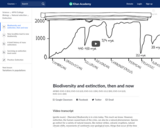
Overview of biodiversity and extinction.
- Subject:
- Biology
- Life Science
- Material Type:
- Lesson
- Provider:
- Khan Academy
- Provider Set:
- California Academy of Sciences
- Author:
- California Academy of Sciences
- Date Added:
- 11/25/2014

Overview of biodiversity and extinction.

This graduate course will introduce students to the processes controlling phytoplankton, zooplankton, heterotrophic bacterial and benthic infaunal growth and abundance. We'll do a broad-scale survey of patterns of productivity and abundance in the coastal zones, upwelling centers, gyres, and the deep sea. We'll briefly survey ecosystem simulation models, especially those applicable to the Gulf of Maine. Readings will be from the primary literature and a few book chapters. The effects of anthropogenic effects on marine communities will be stressed throughout. Calculus will be used throughout the course, but there is no formal calculus requirement.

Biology is designed for multi-semester biology courses for science majors. It is grounded on an evolutionary basis and includes exciting features that highlight careers in the biological sciences and everyday applications of the concepts at hand. To meet the needs of today’s instructors and students, some content has been strategically condensed while maintaining the overall scope and coverage of traditional texts for this course. Instructors can customize the book, adapting it to the approach that works best in their classroom. Biology also includes an innovative art program that incorporates critical thinking and clicker questions to help students understand—and apply—key concepts.

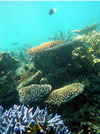
By the end of this section, you will be able to:Describe the effects of abiotic factors on the composition of plant and animal communities in aquatic biomesCompare and contrast the characteristics of the ocean zonesSummarize the characteristics of standing water and flowing water freshwater biomes
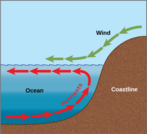
By the end of this section, you will be able to:Define biogeographyList and describe abiotic factors that affect the global distribution of plant and animal speciesCompare the impact of abiotic forces on aquatic and terrestrial environmentsSummarize the affect of abiotic factors on net primary productivity

By the end of this section, you will be able to:Define global climate changeSummarize the effects of the Industrial Revolution on global atmospheric carbon dioxide concentrationDescribe three natural factors affecting long-term global climateList two or more greenhouse gases and describe their role in the greenhouse effect

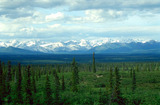
By the end of this section, you will be able to:Identify the two major abiotic factors that determine terrestrial biomesRecognize distinguishing characteristics of each of the eight major terrestrial biomes

By the end of this section, you will be able to:Define ecology and the four levels of ecological researchDescribe examples of the ways in which ecology requires the integration of different scientific disciplinesDistinguish between abiotic and biotic components of the environmentRecognize the relationship between abiotic and biotic components of the environment

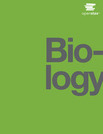
This course is the introduction to the ... Biology is designed for multi-semester biology courses for science majors. It is grounded on an evolutionary basis and includes exciting features that highlight careers in the biological sciences and everyday applications of the concepts at hand. To meet the needs of today’s instructors and students, some content has been strategically condensed while maintaining the overall scope and coverage of traditional texts for this course. Instructors can customize the book, adapting it to the approach that works best in their classroom. Biology also includes an innovative art program that incorporates critical thinking and clicker questions to help students understand—and apply—key concepts.

Biology is designed for multi-semester biology courses for science majors. It is grounded on an evolutionary basis and includes exciting features that highlight careers in the biological sciences and everyday applications of the concepts at hand. To meet the needs of today’s instructors and students, some content has been strategically condensed while maintaining the overall scope and coverage of traditional texts for this course. Instructors can customize the book, adapting it to the approach that works best in their classroom. Biology also includes an innovative art program that incorporates critical thinking and clicker questions to help students understand—and apply—key concepts.

Investigate collisions on an air hockey table. Set up your own experiments: vary the number of discs, masses and initial conditions. Is momentum conserved? Is kinetic energy conserved? Vary the elasticity and see what happens.
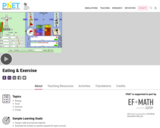
How many calories are in your favorite foods? How much exercise would you have to do to burn off these calories? What is the relationship between calories and weight? Explore these issues by choosing diet and exercise and keeping an eye on your weight.

Flow of energy and matter through ecosystems. What happens if an ecosystem is disrupted. Video by California Academy of Sciences. Created by California Academy of Sciences.
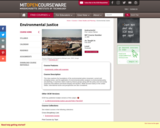
Examines theories and practice of environmental justice, concerns about race, poverty, and the environment in both domestic and international contexts, exploring and critically analyzing philosophies, frameworks, and strategies underlying environmental justice movements. Examines case studies of environmental injustices, including: distribution of environmental quality and health, unequal enforcement of regulations, unequal access to resources to respond to environmental problems, and the broader political economy of decision-making around environmental issues. Explores how environmental justice movements relate to broader sustainable development goals and strategies. This class explores the foundations of the environmental justice movement, current and emerging issues, and the application of environmental justice analysis to environmental policy and planning. It examines claims made by diverse groups along with the policy and civil society responses that address perceived inequity and injustice. While focused mainly on the United States, international issues and perspectives are also considered.
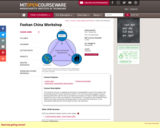
This practicum focuses on applying the principles of sustainability to improve the quality of life and activity along the Foshan downtown riverfront. The City has recently engaged in several planning efforts that, with the help of consultants and experts, will help to identify strategies to revitalize the City's center and establish a new downtown. This practicum will compliment these efforts by focusing on planning and design options in and around the Pearl River, a now underutilized waterway that runs through the City's new downtown.

This design-based subject provides a first course in energy and thermo-sciences with applications to sustainable energy-efficient architecture and building technology. No previous experience with subject matter is assumed. After taking this subject, students will understand introductory thermodynamics and heat transfer, know the leading order factors in building energy use, and have creatively employed their understanding of energy fundamentals and knowledge of building energy use in innovative building design projects. This year, the focus will be on design projects that will complement the new NSTAR/MIT campus efficiency program.
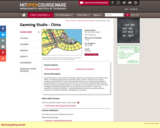
The studio will focus on the district of Gaoming, located in the northwest of the Pearl River Delta (PRD) - the fastest growing and most productive region of China. The District has recently completed a planning effort in which several design institutes and a Hong Kong planning firm prepared ideas for a new central area near the river. The class will complement these efforts by focusing on planning and design options on the waterfront of the proposed new district and ways of integrating water/hydrological factors into all aspects and land uses of a modern city (residential, commercial, industrial) - including watershed and natural ecosystem protection, economic and recreational activities, transportation, and tourism.